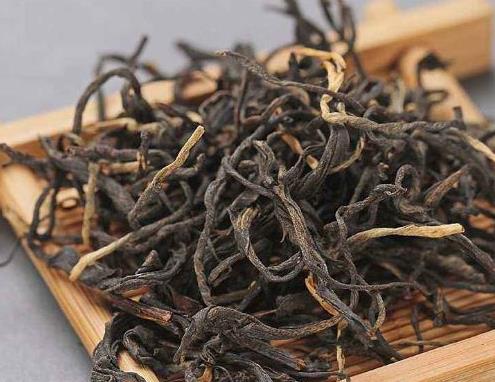
Maybe you don't know, in fact, there is a kind of Yingde black tea with a history of more than 1,200 years in Yingde City, Guangdong Province. To trace the historical origins of British-German black tea, there is really too much to say. . . Ten thousand words are ignored here. What we are going to talk about today is about the processing technology of Yingde black tea, and look at the differences in processing technology between this Yingde black tea and other black tea production areas.

The characteristics of Yingde black tea: dark color, uniform and firm particles, sharp aroma, bright red tea, strong taste, sweet and refreshing after drinking, refreshing and refreshing, it is very suitable for clear drinking; of course, you can also add an appropriate amount according to your taste and preferences Milk, rock sugar, etc.
The craftsmanship of Yingde black tea is also very sophisticated, and it is mainly divided into two major processes: initial preparation and refining.
First: Picking
The picking time of Yingde black tea is in spring and autumn, especially 15 days before and after the Ching Ming Festival in spring. The picking standard is the first bud and the first bud and two leaves, which are processed through multiple processes.
Second: Withering
After the fresh leaves have withered, the second step of making tea, rolling. Kneading is to gently knead the withered tea leaves like kneading dough, so that the qi becomes a strip.
In the process of kneading, it is important to break the cells in the tea, and allow the tea polyphenols in the tea to contact with the oxygen in the air, and then enzymatic oxidation will occur, which is a sufficient foundation for the next fermentation.
Step 3: Fermentation
Fermentation is a key step in the production of Yingde black tea. The leaves are the decisive process for the tea to turn red. After kneading the tea leaves, only after fermentation, the green tea leaves will gradually turn into red, forming the unique color and fragrance of black tea.
Step 4: Drying
The last general process of the initial production is drying. After baking at a high temperature, on the one hand, the enzyme activity is terminated to prevent excessive fermentation; on the other hand, the moisture in the tea is dried to less than 7%, which is conducive to the preservation of the tea; on the third, the aroma is enriched and developed.
During the drying process, under the action of high temperature, the low-boiling aroma substances of grassy air are dissipated by the wind, and at the same time, sugar substances and amino acids undergo a sugar-oxygen reaction to produce different aromas with rich layering.

The above is a few steps of the initial production of Yingde black tea. After the initial production, what are the steps for the next refinement?
The refining processes are: initial shaking, sieving, bagging, hair shaking, hair shaking, net shaking, net shaking, foot frustration, winnowing, floating sieve, shaking sieve, hand picking, blending, filling fire, even pile There are 16 processes in total, including screening, bagging, winnowing, picking, filling fire, and official piles.
The first step: screening
The prepared Maocha first passes through a sieve to determine the size of the tea leaves; a manual sieve is also called a hanging sieve. One end of the sieve edge is tied to an elevated frame with a rope, and the other end is shaken by hand. The key to shaking the sieve is to use your wrists and ankles to make the tea cover the surface of the sieve and shake evenly.
After shaking the sieve, sieving is carried out, which is to separate out multiple numbers. When sieving, the hand must be level and shake at a constant speed. Once it is tilted, the material will be dislodged, and the good tea will not be sifted out.
The second step: bagging
After the sieving is done, the big tea heads on the sieve must be kept small, so this process is called bagging in our English and German locals. Put the tea in a cloth bag and beat it up with a stone block. The beating also requires skill, strength, and frequency, all of which are exquisite.
The third step: wind screen
The purpose is to distinguish the lightness of the tea leaves and eliminate the light-textured tea leaves. Generally, we process black tea and pick it by manual hand fans to select it. Under constant shaking, some tea leaves with relatively light bones will pass from the air outlet. Then, the remaining tea leaves are air sieved and repeated several times until it is best to select tea leaves of different specifications.
The fourth step: floating screen
The purpose of this step is to be afraid of the low-grade tea that leaks during the wind screening process, and it is also to select light yellow tablets.
Step 5: Floating Screen
When making tea, the tea leaves on the tea tray are floated rhythmically, and the light tea leaves are floated out, so that the light tea can continue to be eliminated.
Step 6: Picking
The first few steps to select good tea, do not have bad quality, this step often requires further manual selection, which is a time-consuming step.
Step 7: Fill the fire
In the process of refining, tea leaves will inevitably be invaded by more or less moisture, so before packaging, it must go through the step of filling the fire; the method is to place the selected tea on a drying cage and dry it with charcoal fire.
In the process of drying with charcoal fire, there is often a great deal of attention to the heat. This step of supplementing the fire can remove some of the water in the tea, which is more resistant to preservation, and can also stimulate the aroma of the tea and improve the quality.
The eighth step: also known as "uniform pile". Pour the fire-filled teas into the official stacking yard in layers to form a high square pile. Use a wooden-toothed rake to comb and rake the tea outwards to make the tea mixed and flow down, which is a small pile, and then carry out a large pile according to the above method. , So that the tea of each number is evenly mixed, and then it can be packed into refined black tea
This is a full introduction to the processing and production process of our Yingde black tea. In fact, in the age when modern technology is so superb, Yingde black tea still retains the traditional hand-made. I think this may be the charm of Yingde black tea, and it is precisely because of these cumbersome processing procedures that lead to it. Yingde black tea has outstanding and extraordinary quality, otherwise it will not be in the eyes of the Queen of England. Give us a compliment for Yingde black tea.


Mobile phone:13929191085 13422006435
E-mail:835727061@qq.com QQ:835727061
Address Factory:No. 28, Beihu 1st Road, Luocun, Shishan Town, Nanhai District, Foshan City